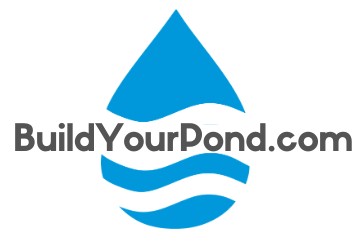Description
Pondless courtyard waterfall features are ideal for small spaces like courtyards and patios. These features use large containers or raised basins, incorporating potted marginal plants to create a tropical touch. They are low-maintenance and perfect for those who want the beauty of a water feature without the hassle of a traditional pond.
Planning and Design
- Choosing the Location:
- Visibility and Accessibility: Select a spot that is easily visible from seating areas and accessible for maintenance.
- Proximity to Electrical Outlets: Ensure the location has access to electrical outlets for the pump.
- Designing the Waterfall:
- Sketch the Layout: Draw a detailed plan, including the location of the container or basin, waterfall spillway, and plant arrangements.
- Container Selection: Choose a large, attractive container or basin that complements your courtyard decor. It should be deep enough to house the pump and hold sufficient water.
- Plant Arrangements: Plan for potted marginal plants around the waterfall to create a lush, tropical look.
- Regulations and Permits:
- Check Local Codes: Verify any local regulations or permits required for installing water features and electrical components.
Materials and Tools Needed
- Materials:
- Large Container or Basin: A decorative container or basin that fits your courtyard style. This can be made of materials like ceramic, metal, or stone.
- Waterfall Spillway: A preformed spillway ensures a smooth, even flow of water.
- Pump: Choose a pump rated for continuous use and sized appropriately for the waterfall.
- PVC Pipe and Fittings: For plumbing the waterfall.
- Rocks and Gravel: For lining the pond and creating a natural look.
- Potted Marginal Plants: Plants like umbrella palms, papyrus, or other tropical species.
- Tools:
- Utility Knife: For cutting any necessary holes in the container for plumbing.
- Shovels and Rakes: For leveling the area if needed.
- Level: Ensures the container and spillway are properly positioned.
- Electrical Tools: For installing the pump and connecting it to the power source.
Setting Up the Waterfall
- Marking the Area:
- Outline the Position: Use a garden hose or rope to outline the position of the container in your courtyard.
- Preparing the Container:
- Drill Holes for Plumbing: If your container does not have pre-drilled holes, use a utility knife to create openings for the pump’s intake and outflow.
- Positioning the Container:
- Level the Ground: Ensure the ground where the container will sit is level to prevent water from spilling unevenly.
- Place the Container: Set the container in its designated spot. Ensure it is stable and secure.
- Installing the Pump and Plumbing:
- Place the Pump: Position the pump at the bottom of the container. It should be fully submerged and positioned to draw water effectively.
- Connect the Spillway: Attach the PVC pipe from the pump to the waterfall spillway. Ensure the connection is tight and secure.
- Secure the Connections: Ensure all connections are tight to prevent leaks. Use waterproof sealant if necessary.
Adding Water and Testing the System
- Filling with Water:
- Initial Fill: Fill the container with water, ensuring it covers the pump. Check for any leaks or issues with the setup.
- Testing the Pump:
- Run the Pump: Turn on the pump and check for proper water flow. Adjust the position of the spillway if needed to ensure a smooth flow.
- Concealing the Pump:
- Add Rocks and Gravel: Place rocks and gravel around the pump to conceal it and create a natural look.
Landscaping and Decoration
- Arranging Plants:
- Potted Marginal Plants: Arrange potted marginal plants like umbrella palms around the container. These plants thrive in moist conditions and add a tropical touch to the courtyard.
- Decorative Elements: Add decorative elements such as statues, lanterns, or seating areas around the waterfall feature.
- Additional Lighting:
- Ambient Lighting: Consider adding solar-powered lights or low-voltage landscape lighting to enhance the feature at night.
Maintenance Tips
- Regular Cleaning:
- Debris Removal: Regularly remove leaves and debris from the container to keep the water clean.
- Pump Maintenance: Check and clean the pump filter periodically to ensure optimal performance.
- Water Quality:
- Water Additives: Use water additives to prevent algae growth and maintain clear water.
- Winter Care:
- Winterizing the Pump: In colder climates, remove the pump and store it indoors during winter to prevent damage. Drain the container if necessary.
Estimated Costs
- Installation Costs: Typically range from $1,500 to $5,000, depending on the size, materials, and complexity of the design.
